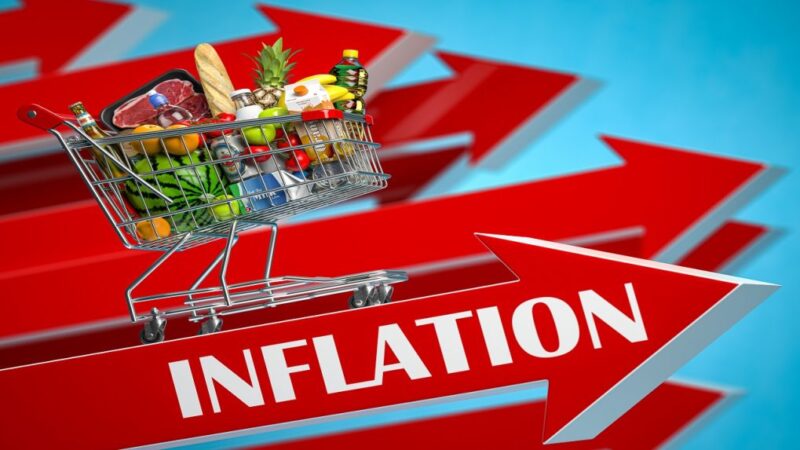Us inflation jumped 7 5 in in 40 years rajkotupdates news : policymakers, and everyday citizens for decades. Over the last 40 years, it has taken a significant leap, with the most recent data showing a staggering 7.5% increase. In this article, we will delve into the factors contributing to this jump in inflation, its implications, and potential strategies to address it.
Also read : https://yourstorybuzz.com/vofey-shop-the-ultimate-online-fashion-hub-for-women/
1. The Role of Monetary Policy:
One of the primary drivers of inflation in the US has been monetary policy. The Federal Reserve, responsible for managing the country’s money supply, has adopted a low-interest rate policy for an extended period. This policy was initially intended to stimulate economic growth and mitigate the impact of the 2008 financial crisis. However, it has persisted for years, resulting in excessive rajkotupdates news :liquidity in the financial system. When there is too much money chasing too few goods and services, prices tend to rise, leading to inflation.
2. Supply Chain Disruptions:
The COVID-19 pandemic disrupted global supply chains, causing shortages of various goods and materials. From semiconductors to lumber, these shortages have driven up prices. The pandemic also led to labor shortages, affecting production capacity and increasing labor costs, both of which contribute to inflation.
3. Rising Energy Costs:
Energy prices, including those of oil and gas, have surged in recent years. Geopolitical tensions, supply constraints, and the transition to renewable energy sources have all played a role in pushing energy costs higher. These increased energy costs have a cascading effect on the prices Us inflation jumped 7 5 in in 40 years rajkotupdates news : of goods and services throughout the economy.
4. Housing Market Surge:
The housing market has seen a significant surge in prices, driven by low mortgage rates, increased demand, and a lack of available housing stock. This has had a profound impact on the overall inflation rate, as housing is a significant component of the consumer price index (CPI).
5. Wage Inflation:
Wages have been on the rise as the job market tightens. Many companies have had to offer higher salaries and better benefits to attract and retain employees. rajkotupdates news :While this is a positive development for workers, it can contribute to inflationary pressures, as businesses pass these increased labor costs onto consumers through higher prices.
6. Fiscal Stimulus:
Us inflation jumped 7 5 in in 40 years rajkotupdates news : The US government has implemented multiple rounds of fiscal stimulus packages to combat the economic fallout from the pandemic. While these measures have provided much-needed relief to individuals and businesses, they have also injected large sums of money into the economy, potentially fueling inflationary pressures.
7. Global Factors:
In today’s interconnected world, global events and dynamics can have a profound impact on a country’s inflation rate. Changes in international trade, geopolitical tensions, and fluctuations in commodity prices can all influence domestic inflation.
Implications of High Inflation:
High inflation can have significant consequences for the economy and individuals. It erodes the purchasing power of money, meaning that the same amount rajkotupdates news :of currency buys fewer goods and services. Savers may see the real value of their savings decrease over time, and fixed-income retirees may struggle to make ends meet as the cost of living rises.
For businesses, managing costs becomes more challenging in a high-inflation environment. They may have to raise prices to protect profit margins, potentially reducing consumer purchasing power further and perpetuating a cycle of rising prices.
Addressing High Inflation:
Us inflation jumped 7 5 in in 40 years rajkotupdates news : Addressing high inflation is a complex task that requires a combination of monetary, fiscal, and structural policies. Here are some strategies that can be employed:
1. Adjusting Monetary Policy:
The Federal Reserve can consider tightening monetary policy by raising interest rates. This can help reduce the money supply in the economy and curb inflation. However, it’s a delicate balancing act, as overly aggressive rate hikes can stifle economic growth.
2. Fiscal Restraint:
The government can exercise fiscal restraint by reducing deficit spending. This would involve cutting unnecessary government expenditures and raising taxes, rajkotupdates news :which can help reduce the overall demand in the economy.
3. Addressing Supply Chain Issues:
Efforts should be made to address supply chain disruptions, including diversifying supply sources and investing in infrastructure to improve logistics.
4. Housing Market Reforms:
Us inflation jumped 7 5 in in 40 years rajkotupdates news : Policies to increase the housing supply, such as easing zoning restrictions and incentivizing construction, can help stabilize housing prices.
5. Wage Growth Management:
Wage growth should be monitored to ensure it is in line with productivity increases. This can help avoid a wage-price spiral where higher wages lead to higher prices.
6. Energy Policy:
Developing a stable and sustainable energy policy can help mitigate the impact of energy price fluctuations on inflation.
conclusion
Also read : https://yourstorybuzz.com/vofey-shop-the-ultimate-online-fashion-hub-for-women/
Us inflation jumped 7 5 in in 40 years rajkotupdates news : the 40-year leap in US inflation is a complex issue with multiple contributing factors. While inflation can have detrimental effects on the economy and individuals, it is not without solutions. A combination of prudent monetary policy,rajkotupdates news : fiscal responsibility, and targeted structural reforms can help address high inflation and ensure economic stability for the years to come. It is imperative for policymakers to work collaboratively to implement these strategies effectively and in a timely manner.
FAQ
1. What factors have contributed to the significant increase in US inflation over the past 40 years?
The increase in US inflation over the last four decades can be attributed to several factors. These include loose monetary policy, supply chain disruptions caused by the COVID-19 pandemic, rising energy costs, a surge in housing prices, wage inflation, fiscal stimulus measures, and global economic dynamics.
2. How does high inflation impact individuals and the economy?
High inflation erodes the purchasing power of money, meaning that the same amount of currency buys fewer goods and services over time. This can lead to a decreased standard of living for individuals and create uncertainty in financial planning. For the economy, high inflation can hinder business operations, reduce consumer purchasing power, and create economic instability.
3. What role does monetary policy play in controlling inflation?
Monetary policy, managed by the Federal Reserve, plays a crucial role in controlling inflation. The central bank can adjust interest rates to influence the money supply. Us inflation jumped 7 5 in in 40 years rajkotupdates news : Raising interest rates can reduce inflationary pressures by making borrowing more expensive, which can decrease spending and investment.
4. How can supply chain disruptions impact inflation?
Supply chain disruptions, such as those seen during the COVID-19 pandemic, can lead to shortages of goods and materials. When demand outstrips supply, prices tend to rise. These disruptions can have a cascading effect throughout the economy, contributing to inflation.
5. What are some strategies to address high inflation in the US?
rajkotupdates news :high inflation requires a combination of monetary, fiscal, and structural policies. The Federal Reserve can tighten monetary policy by raising interest rates. The government can practice fiscal restraint by reducing deficit spending. Efforts should also be made to address supply chain issues, stabilize the housing market, manage wage growth, and develop a sustainable energy policy to mitigate inflationary pressures.







